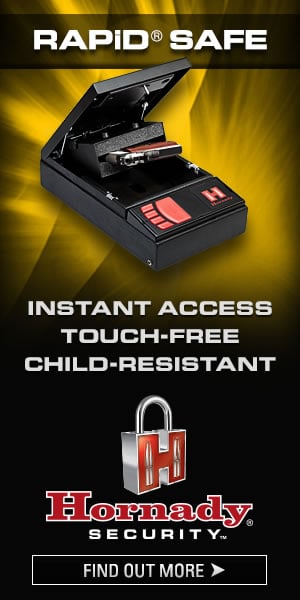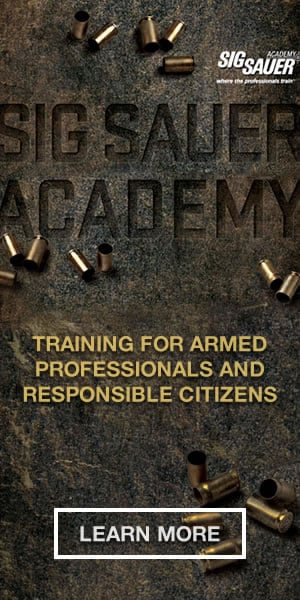To borrow on a sales slogan from the Ford Motor Company, "Gun Safety is Job One". Unfortunately I have been checking into four recent accidental handgun discharge incidents which illustrate that this slogan or concept may not be taken to heart by everyone who handles firearms—but it should be. Two of these incidents gained national attention, two were local issues. ALL were likely preventable, although one incident could be forgiven due to the circumstances, even though it too could have been prevented. Fortunately—and somewhat amazingly—none of these incidents resulted in fatalities or long term harm. One is probably a career ender.
The first incident involves a lack of safety during gun cleaning. The other three incidents involve holster and draw and re-holstering issues. Of those three, one—for lack of any better description—involves in part the improper selection of a holster for the activities being engaged in. All three involve loaded handguns being carried on the body. All four incidents are recent.
Incident One-Gun Cleaning
A man reputed to be fairly knowledgeable about firearms had fired his .380 semi-automatic concealment pistol at a range practice session. He brought the gun home and set up his cleaning equipment. He apparently failed to follow the most basic rule of gun cleaning AND of semi-automatic pistol handling and safety. He had not properly cleared the weapon first.
As he began the cleaning process, he managed to pull the trigger of his still loaded pistol and launched a .380 round through the palm of his left hand. Fortunately there were no other persons standing on the other side of his hand and no one else was injured. At the hospital (ALL gunshot wounds are reported by the hospital to local police accidental or not) the investigating officers reported that the doctor said that the injured gun handler was lucky as the bullet passed through the hand without damaging any underlying structures. If he had to shoot himself in the hand he had struck the best place. He was left with pain and a lot of embarrassment. Lessons learned? Always unload a semi-automatic pistol by removing the magazine FIRST before clearing the chamber. Then check and re-check the chamber and magazine well to make sure all is clear before attempting to disassemble the firearm. The same is true of box magazine fed semi-automatic rifles. If you don’t intend to get thoroughly familiar with a semi-automatic handgun for defensive use, consider a revolver instead. It is much simpler and more forgiving to operate and clean.
Incident Two-Drawing, Re-Holstering and Quick Draw Practice
An individual was taken by his wife to the emergency room one day, suffering from a gunshot wound to the abdomen. The victim was shot the afternoon before, but did not tell his wife about it that day due to major embarrassment and of course fear of what would happen in the aftermath. Pain finally forced him to tell her.
The victim had gotten a new IWB holster that he wanted to test. He decided to test it out in the side yard of his somewhat secluded house (that was in an incorporated area) by quick drawing his loaded .380 semi-automatic pistol. At some point during the practice session he accidentally discharged the gun into his abdomen. Fortunately no internal or critical structures were hit, and the wound was a through and through flesh wound. He was a Concealed Carry Permit holder from his state of residence. He was embarrassed by the incident and his wife—as one might surmise—was not pleased. He also did nothing to enhance the reputation of concealed carry permit holders in general. But fortunately, no one else was injured. Lessons learned? Never practice quick drawing from a holster—especially a new one that you aren’t familiar with—with a loaded firearm. Do extensive work with the gun unloaded to make sure it is a safe and accessible holster before ever drawing it using live ammo. KEEP your finger on the frame of the handgun as you draw and reholster, and not inside the trigger guard area or, of course, on the trigger itself. Remember the old axiom "Slow is smooth, smooth is fast". Few good guy lives are ever saved by a lightning fast draw—but a flawless smooth draw can make sure you prevail without shooting something unintended. Oh yeah, and if you married guys out there ever shoot yourselves accidentally, let your wives know about it right away. It will be even worse for you if you wait for a day before mentioning it. Note: Vance Outdoors and most public ranges do NOT permit fast or slow drawing practice from a holster for the safety of others while firing.
Incident Three-On Duty Discharge
Here is a recent incident that involved either holstering or re-holstering a loaded handgun—and it is one that can be more easily excused. It involved a San Diego police officer who was responding to a pursuit that was later reported to be an active shooter incident at the 2018 San Diego Marathon. After the Boston Marathon terrorist attack, one can imagine that tensions in responding law enforcement officers might be high in a call like this. The officer in question at some point discharged his service pistol into his own leg. The location of the injury received during this event tells me that it may have occurred either during the draw or while re-holstering. I know a police officer who shot himself in the foot during range training while he was re-holstering a newly issued handgun he was unfamiliar with. He also suffered a minor "flesh wound". And this occurred in a non-stress situation. So I understand how this might happen (but definitely shouldn’t have happened) in a high stress "active shooter" type incident. The news account reported "The chief said the wounded officer's gun accidentally discharged and he was struck once in the lower leg. He was expected to fully recover." The only problem with this statement is that the officer’s gun did not accidentally discharge of its own accord. At some time during this event the officers trigger finger entered the triggerguard causing the discharge. Fortunately again, no one else was hurt, but the officers gunshot injury caused additional confusion and diversion of resources responding to the active shooter report. Lesson learned? The trigger finger MUST remain along the frame and outside of the trigger guard during the draw and reholstering. Always think "finger on frame until you are ready to shoot".
Incident Four-Inexcusable Stupidity
As bad as the previous incidents might be, I’ve saved the worst for last. An armed, off-duty FBI agent was recently visiting a Denver night club. One has to assume he was drinking due to the behavior that was about to unfold. Note: While off-duty law enforcement officers can carry their firearms in establishments that serve alcohol, agency regulations will prevent them from either drinking alcohol or becoming intoxicated while armed. Regardless of his condition, the agent decided to perform a backflip on the dance floor, with his duty handgun tucked in a waistband holster. It appears that he carried the handgun—likely a Glock 9mm, which has been the standard duty handgun of the FBI since 2016—in an IWB holster that did not also have a thumb break retention strap on it. Remember when I said that one case "involves in part the improper selection of a holster for the activities being engaged in"? Well this is the case.
While quality IWB holsters will retain a handgun without an extra retention strap during NORMAL activities, no maker will guarantee retention while doing backflips on a dance floor. That kind of activity will likely cause a gun to "squirt out" of a holster just as it did in this case. The likely soon to be former FBI agent quickly grabbed for his pistol which was now on the floor and in whatever condition he was in, managed to hook his finger inside the triggerguard. The result was a "boom" followed by a bystander likely injured— thankfully—in a lower extremity. There could just as well have been one or two fatalities from an incident in a tightly packed bar. However, I think the worst part of this incident was how the agent nonchalantly stuck the gun back in his waistband (amazing it didn’t go "boom" again) after the discharge, and walked off the floor, not checking to see if anyone was injured by his irresponsible actions. Lessons learned? Where do I begin? First, alcohol— if it was involved—and guns don’t mix. Second, know the limitations of the holster you carry a handgun in. Third, circus acrobatics and handguns don’t mix. Finally—and it hasn’t happened as of this writing—a law enforcement officer who engages in this activity will likely and rightly be terminated and perhaps criminally charged. It is fortunate someone was filming this guy’s antics. No lawful carrier of firearms should be this stupid.
Gun Safety is truly "Job One" when it comes to handling firearms, whether you are a cop or citizen. Thankfully, no one was killed or seriously injured in these incidents. Remember that when you have an accidental discharge, the bullet can never be recalled and what is about to happen can never be altered. Think of this whenever you handle ANY firearm ANYWHERE.


